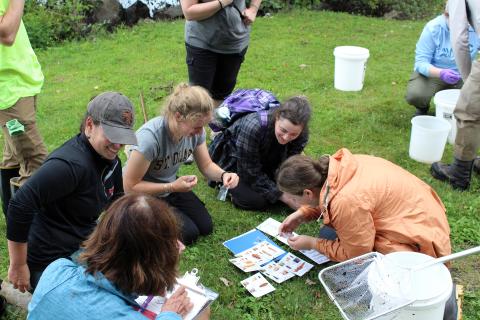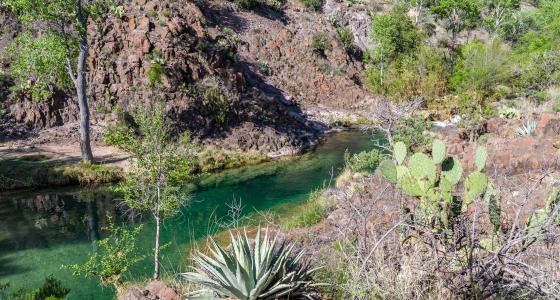This summer, a number of Partnership Wild and Scenic Rivers participated in the Dragonfly Mercury Project, collecting samples of dragonfly larvae to be tested for mercury by the U.S. Geological Survey (USGS). The goal of this project is to test for levels of this pollutant in the environment from sites all over the country.
Mercury released from industrial sources can travel great distances and be deposited through dust, rain, runoff, and fog into even the most isolated of settings. This chemical is absorbed through food, building up in the tissues of organisms. As organisms are consumed, this chemical accumulates, or biomagnifies, through the food chain, reaching dangerous levels for humans, fish, and other wildlife. Dragonfly larvae are the ideal specimen for this testing because they build up mercury through their diet of other insects, they are consumed by a number of other species, and they inhabit a diverse set of environments.
This summer, the Sudbury, Assabet, and Concord Rivers (Massachusetts); the Nashua, Squannacook, and Nissitissit Rivers (Massachusetts, New Hampshire); the Maurice River (New Jersey); and the Wekiva River (Florida) all collected samples to send to the USGS, increasing the ever-growing number of collection sites to over 500 waterbodies. Volunteers collected specimens from the shallow areas along the side of each river, carefully placing the larvae in collection bags and identifying them to the species level, noting the size as well.
This volunteer effort is another goal of the project—to encourage citizen science by incorporating school groups, early career professionals, local councils, and others to participate. Throughout the history of the Dragonfly Mercury Project, 4,500 citizen-scientists have participated in this project, contributing over 20,000 hours. More than just collection, the Dragonfly Mercury Project strives to connect people to parks and promote scientific literacy.
Overall, this was a very successful season with over 100 samples across the Partnership Wild and Scenic Rivers, spanning four states and eight rivers, and we look forward to continuing to support this initiative!
To learn more about the Dragonfly Mercury Project or view the collected data, view the USGS DMP Story Map or DMP article on NPS’s website.




